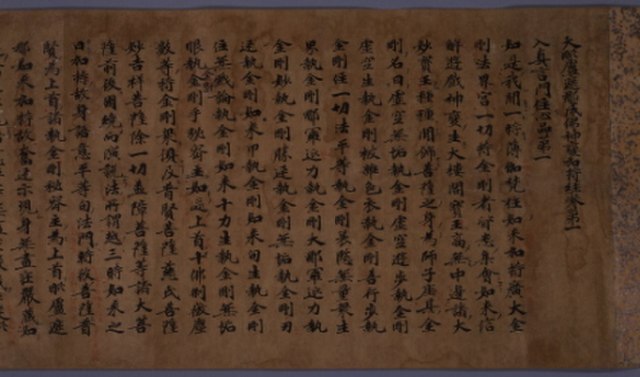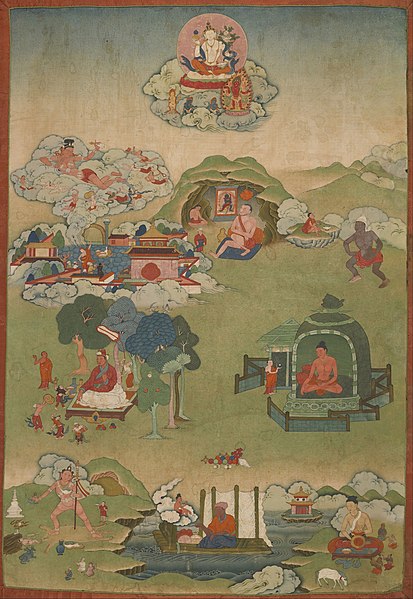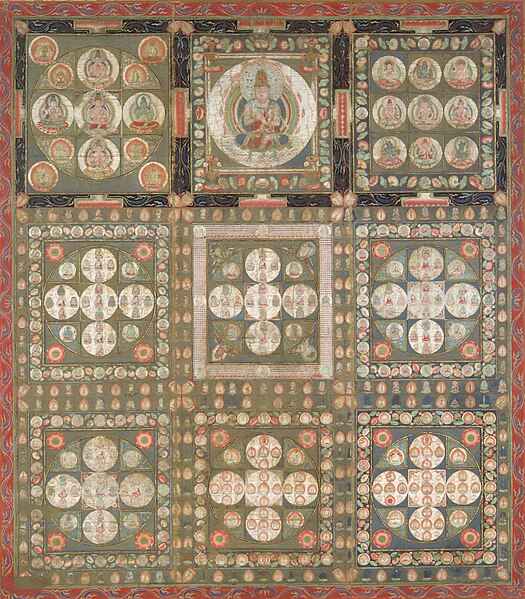Buddhist tantric literature
Videos
Page
Buddhist tantric literature refers to the vast and varied literature of the Vajrayāna Buddhist traditions. The earliest of these works are a genre of Indian Buddhist tantric scriptures, variously named Tantras, Sūtras and Kalpas, which were composed from the 7th century CE onwards. They are followed by later tantric commentaries, original compositions by Vajrayana authors, sādhanas, ritual manuals, collections of tantric songs (dohās) odes (stotra), or hymns, and other related works. Tantric Buddhist literature survives in various languages, including Sanskrit, Tibetan, and Chinese. Most Indian sources were composed in Sanskrit, but numerous tantric works were also composed in other languages like Tibetan and Chinese.

A manuscript of the Vajravali, a tantric commentary by Abhayakaragupta (manuscript c. 11th or 12th century CE, Sanskrit in Nepalaksara script).

Kāraṇḍavyūha Sūtra manuscript (c. 14th century, Newari) with a miniature illustration of Avalokiteśvara

Chinese translation of the Vairocanābhisaṃbodhi (Awakening of Vairocana)

The Garbhadhātu maṇḍala, derived from the teachings of the Mahāvairocana Tantra. Buddha Vairocana is located in the center.
Vajrayana
Videos
Page
Vajrayāna, also known as Mantrayāna, Mantranāya, Guhyamantrayāna, Tantrayāna, Tantric Buddhism, and Esoteric Buddhism, is a Buddhist tradition of tantric practice that developed in the Indian subcontinent and spread to Tibet, Nepal, other Himalayan states, East Asia, and Mongolia.

A vajra and bell (ghanta), which are classic ritual symbols of Vajrayāna

Mahasiddhas, Palpung monastery. Note the figure of the great adept Putalipa at center, seated in a cave and gazing at an image of the meditational deity Samvara and the figure at the bottom left holding a skull-staff (khaṭvāṅga) and a flaying knife (kartika).

Diamond Realm mandala, based on the tantric Vajrasekhara Sutra, and symbolizing the final realization of Vairocana Buddha in Shingon

Naked tantrikas dancing and eating from skull cups (kapalas), closeup of a Chakrasamvara mandala